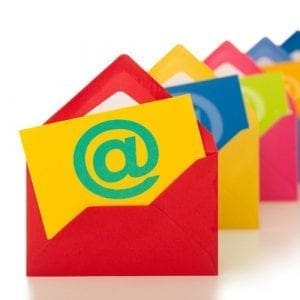As a fellow marketer, I bet we both can agree that it seems like we can never get caught up with emails. Our inbox is flooded with random people or businesses trying to gain our attention. As we skim past every subject line and choose which emails to open, which ones to actually read, and which ones to simply delete, we quickly determine the ones worth our time. If we do it, your consumers do, too. Your email marketing efforts need to be focused on what’s going to attract your consumers to open, click, and buy your products.

Connect your Ecommerce Store
To do this, integrating your Ecommerce store to your email marketing platform correctly is the first step. The data you need to increase your sales will then automatically populate. You’ll begin capturing their purchase history, following their path to your website, and learning more about the people they are such as their demographics, geographic location, and interests. Before you start seeing an impact on your ROI, you need to learn what to actually do with the information you now have.
Segment Your Email Lists
Types of Customer Segments:
- Potential Customers – Those who’ve shown interest, but never purchased should get an email to ensure you both stay connected.
- Recent Customers – If they recently purchased an item, you now have an idea of what they like. Send them a follow-up email with other similar products.
- First-time Customers – These new customers might enjoy a “thank you” email to feel more welcomed and appreciated.
- Repeat Customers – They have purchased more than once already. Make sure they stay your repeat customers by sending them a special offer or coupon.
- Lapsed Customers – Lapsed customers haven’t purchased anything in months. Become top-of-mind again by sending them a deal on the last product they purchased.
- Seasonal Customers – Say some customers only buy during certain months of the year. When this month rolls around, be the first name they see. Send them an email with images of what they usually buy.
Test your Content
Simply because you sent out an email, doesn’t mean you will actually get every customer to open it– We know this. Find out what makes them more inclined to open and interact with your email. A/B testing is the perfect way to do so. This is when you change one variable of an email and see which one performs better. You can test the sender’s name, subject line, send time, copy inside the email, and imagery (videos, gifs, etc.). Does a more blunt, factual approach work for your customers or do they enjoy more humor? Whichever email generates the most sales is your winner!
Rely on Automated Emails
In a study completed by eMarketer, it was found that B2C marketers who leverage automation have seen conversion rates as high as 50%. Automated emails are reminders and follow-ups of a recent consumer interaction. One of the most important automated emails is an abandoned shopping cart reminder. eMarketer also reports that an email notification about an abandoned shopping cart receives a 40.5% open rate. You know they’re interested, so tell them they need it and don’t let them forget.
Track What You’ve Earned
Whether you’re sending an individual email or an entire email campaign, it’s important to analyze the results. How do the open rates and click percentages compare to industry averages? How many unsubscribed from receiving your emails? How many sales did it generate? What was its average dollar sale compared to your other emails? Find out why a certain email performed better (or worse) than another. Constant analysis allows for constant improvement.
Perfect your email marketing now so you can start the New Year with just one more way to improve your ROI.


Leave a Reply